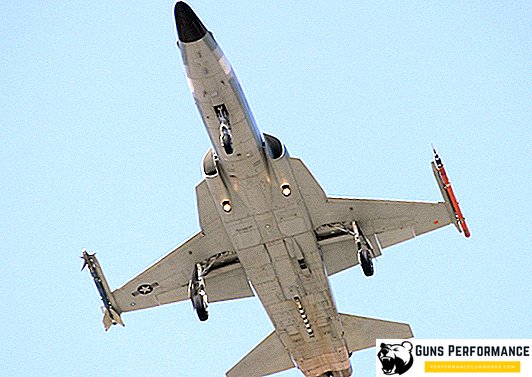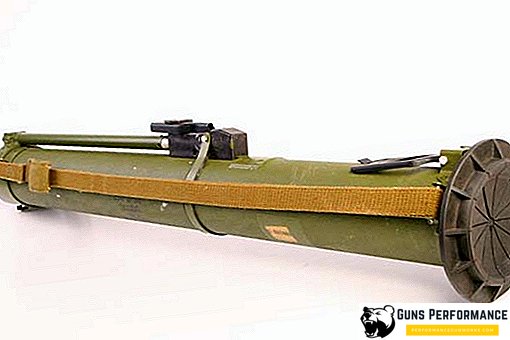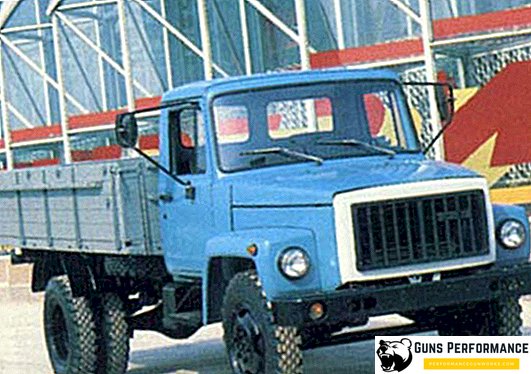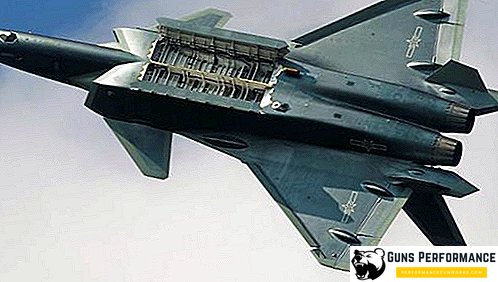Boeing 727 is a narrow-body passenger liner, developed by the same company in 1963.
Overview of the layout of the best seats in the cabin
The passenger capacity of the aircraft Boeing 727 ranges from 131 to 189 people (depending on which version of the layout of the cabin and the model of the liner). The most common is the two-class layout of the cabin, and, therefore, it will be considered in more detail.
In the bow of the passenger cabin of the liner is, as a rule, a business class. According to the scheme, it is represented by rows with numbers from 3 to 5. Places of this class are distinguished by their comfort and convenience. The central passage in the business class has a large width, which also affects the width of the passenger seats.
The best for the business class cabin can be called the places that are in the middle, that is, in the fourth row. Their convenience lies in a certain distance of these places from toilet and other premises, as well as partitions that separate the business class from the economy class.
The least successful seats for a business class cabin are those in the third row. Everything is explained by the location of the toilet here, in which, naturally, the movement of passengers does not stop even at night. The sound of footsteps, opening-closing doors and constantly (even at night) lights burning here are not a complete list of the inconveniences that await third-row passengers.
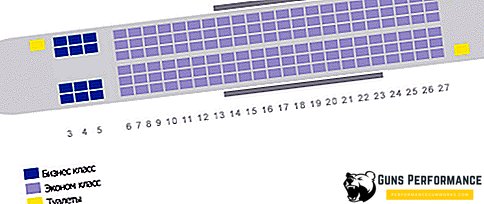
After the seats of business class aircraft Boeing 727 is an economy class. This class is characterized by a narrower central passage, as well as by places located according to the “3-3” scheme. The seats are represented by fairly soft seats, the distance between which is approximately 0.8 m.
The most convenient for the cabin economy class aircraft Boeing 727 are places located in the 6th row (according to the scheme). First of all, this is due to the fact that they do not have other seats in front of them, which means that no one can recline the back and seriously limit legroom, which, by the way, is available for passengers of the sixth row in excess.
The most unsuccessful in the entire shipboard can be called places located in the 27th row (as indicated in the diagram). There are two toilet rooms here, and, consequently, the same lines, vanity and, possibly, unpleasant smell can turn the flight on the Boeing 727 into a real nightmare.
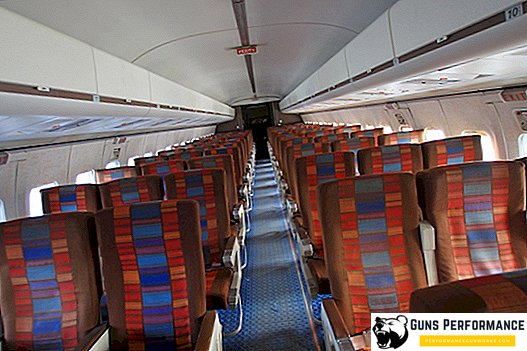
History of creation and operation
At the end of the 50s of the 20th century, the popularity of passenger traffic in the United States very seriously increased. This was due to a kind of “aviation boom”, which all developed countries of that time underwent. Initially, Boeing planned to create a new narrow-body passenger liner for the needs of several US airlines (such as United Airlines). Initially, the Boeing 727 (as the new airliner was named) was designed for intra-American flights and was intended for smaller airports. Also, according to the developers, the Boeing 727 was supposed to be much more economical than its predecessor, the Boeing 717, and also easier to use.
The first flight of a new passenger aircraft company Boeing took place in February 1963, and a year later began its commercial operation. The liner quickly came to the liking of not only American airlines, but also European and even Latin American. The creation of cargo and convertible modifications of the Boeing 727 entailed the fact that the airliner began to increasingly occupy the target niche of narrow-body medium-haul aircraft.
However, the popularity of the model 727 began to decline in the late 60s, when the more sophisticated, economical and reliable Boeing 737 aircraft was created. »Air traffic, thanks to which orders for the Boeing 727 increased again. The last aircraft of the model was built and delivered to the customer in 1984.
To date, only one sixth of the Boeing 727s are in commercial operation. These are mainly cargo modifications, as well as passenger planes of airlines in Africa and South America. The emergence of more powerful and cost-effective aircraft leads to the gradual ousting of Boeing 727 aircraft from the airline market.
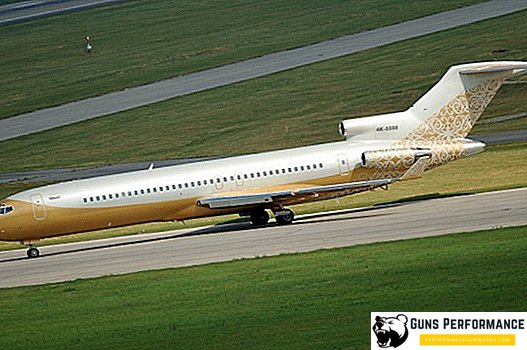
Modifications of the Boeing 727
- Boeing 727 has 8 passenger modifications, as well as a number of military.
- Boeing 727-100 - the base and the first modification of the aircraft. It has a passenger capacity of 131 people. Produced since 1963.
- Boeing 727-100C - a modification that allows you to quickly convert the aircraft from passenger to cargo and back. Letter C is transported as Convertable - convertible.
- Boeing 727-100QC - modification that allows you to quickly convert the aircraft from passenger to cargo and back. QC stands for Quickly Convertable.
- Boeing 727-100QF - Boeing 727 cargo model.
- Boeing 727-100 Business Jet is a modification of the liner, which has a smaller number of passenger seats, but with a significantly higher level of comfort in the cabin and an increased flight range.
- The Boeing 727-200 is an improved model of the liner, which has an elongated body of 6 meters (compared to the Boeing 727-100) and increased passenger capacity.
- Boeing 727-200 Adv. - An improved modification of the Boeing 737-200, which has a greater take-off weight and flight range.
- Boeing 727-200F - cargo model liner.
There are also three modifications designed for the US Army: C-22, C-22B and C-22C.
Characteristics of the aircraft
The Boeing 727 is a nizlane with a T-shaped single-fin tail. The power plant of the liner is represented by three rear-mounted turbofan engines.
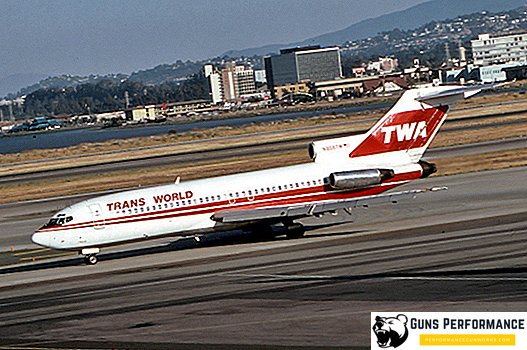
Boeing 727 flight performance:
| Type of | Boeing 727-100 | Boeing 727-200 Adv. |
| Fuselage type | Narrow | |
| Length m | 40,6 | 46,7 |
| Wingspan, m | 32,9 | |
| Tail height, m | 10,4 | |
| Fuselage width, m | 3,8 | |
| Wing area, m² | 157,9 | |
| Wing sweep angle | 32° | |
| Max. capacity, passengers | 131 | 189 (only economy class) / 145 (business and economy classes) |
| Max. take-off weight, kg | 68 946 | 95 030 |
| Empty weight, kg | 39 780 | 45 360 |
| Cruising speed, km / h | 926 | 965 |
| Flight altitude, m | 11 400 | 12 192 |
| Flight range, km | 3056 | 4020 |
| Engines (× 3) | Pratt & Whitney Pratt & Whitney JT8D-1 Thrust 14,000, | Pratt & Whitney Pratt & Whitney JT8D-9A thrust 14,500, |
| Pratt & Whitney Pratt & Whitney JT8D-7 Thrust 14,000, Pratt & Whitney Pratt & Whitney JT8D-9 Thrust 14,500 | Pratt & Whitney Pratt & Whitney JT8D-11 Thrust 15,000, | |
| Pratt & Whitney Pratt & Whitney JT8D-15 thrust 15,500, | ||
| Pratt & Whitney Pratt & Whitney JT8D-17 Thrust 16,000, | ||
| Pratt & Whitney Pratt & Whitney JT8D-17R thrust 17.400 | ||
Conclusion
Boeing 727 can be safely called a fairly successful model of short-range narrow-body passenger aircraft created by the same company. The peak of his fame came in the middle of the 60s of the XX century, and only the rapid emergence of the new model, the Boeing 737, contributed to its rapid "decline." However, this aircraft can still be found in some airlines in Africa or South America.


